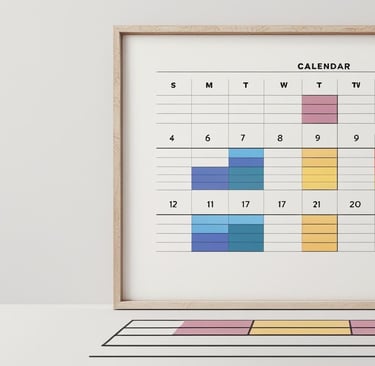Start sending invites for free - no card required - Click here
The Rise of Calendar Invites: Streamlining Communication in the Digital Age
In today’s fast-paced work culture, organizing meetings, coordinating teams, and managing schedules all rely on efficient calendar systems. From corporate boardrooms to virtual classrooms, calendar invites have become the glue that binds people to time slots.
BLOGS
7/30/20252 min read


In today’s fast-paced work culture, organizing meetings, coordinating teams, and managing schedules all rely on efficient calendar systems. From corporate boardrooms to virtual classrooms, calendar invites have become the glue that binds people to time slots.
Whether you're scheduling a one-on-one discussion or organizing a town hall for a thousand attendees, understanding how to send calendar invite Gmail users can open up simpler workflows and fewer miscommunications.
Why Calendar Invites Matter More Than Ever
With the widespread use of remote working and online collaboration, calendar invites serve as professional bookmarks locking people into a time, location (physical or virtual), and purpose. When you send a calendar invite Gmail interface, for instance, you're doing more than just adding a date; you're aligning teams and intentions.
Repeated missed meetings or overlapping schedules? The root issue is often poor calendar coordination. As organizations scale, relying solely on verbal confirmation or email notices becomes insufficient.
How to Send a Calendar Invite in Gmail
Knowing how to send a calendar invite on Gmail is a basic yet crucial professional skill. The steps are intuitive: navigate to Google Calendar, create an event, and add attendees by entering their email addresses. Once saved, Gmail will automatically send calendar invites to the specified contacts.
This built-in integration means users can also send meeting invite in Gmail without ever leaving their inbox or switching between apps. The combination of ease and automation is part of what makes Gmail so dominant in professional environments.
Managing Calendar in Bulk
For project managers and HR teams, the need often arises to send multiple calendar invites in Gmail. Whether launching a company-wide training session or onboarding a new batch of interns, handling calendar in bulk reduces manual repetition and saves time.
While Gmail doesn’t offer native options for mass scheduling in one click, users often get creative by duplicating events, using spreadsheets, or exploring third-party workflow automation. But even without advanced tech, mastering the basic functions can unlock productivity.
Best Practices for Efficient Calendar Scheduling
Add Context to Events: Avoid vague titles like “Meeting” or “Call.” Add detail such as “Q3 Planning – Marketing + Sales.”
Set Time Zone Sensibly: Especially for international attendees.
Send Reminders: Default reminders (10–15 mins before) help attendees prepare.
Avoid Overloading: Sending too many invites too frequently may lead people to ignore them.
When Calendar Invitations Become a Game-Changer
In global organizations, calendar invite protocols play a key role in organizational clarity. For example, a team in India coordinating with U.S. stakeholders must know exactly how to send a calendar invite in Gmail while accounting for time differences, daylight savings, and other nuances.
Knowing when to send meeting invite in Gmail can reduce scheduling errors and missed deadlines.
Conclusion
Whether you're managing a weekly sync or planning an international product launch, mastering calendar tools is essential. Taking the time to learn how to send a calendar invite on Gmail, especially when dealing with calendar in bulk, is not just a technical task it’s a modern-day business competency.
BulkCalendar.in
Send Bulk & Mass Calendar Invites Instantly
Contact us
Engagement
sales@letscalendar.com
+44 (0) 203 916 5117
© 2025. All rights reserved.
Help?
